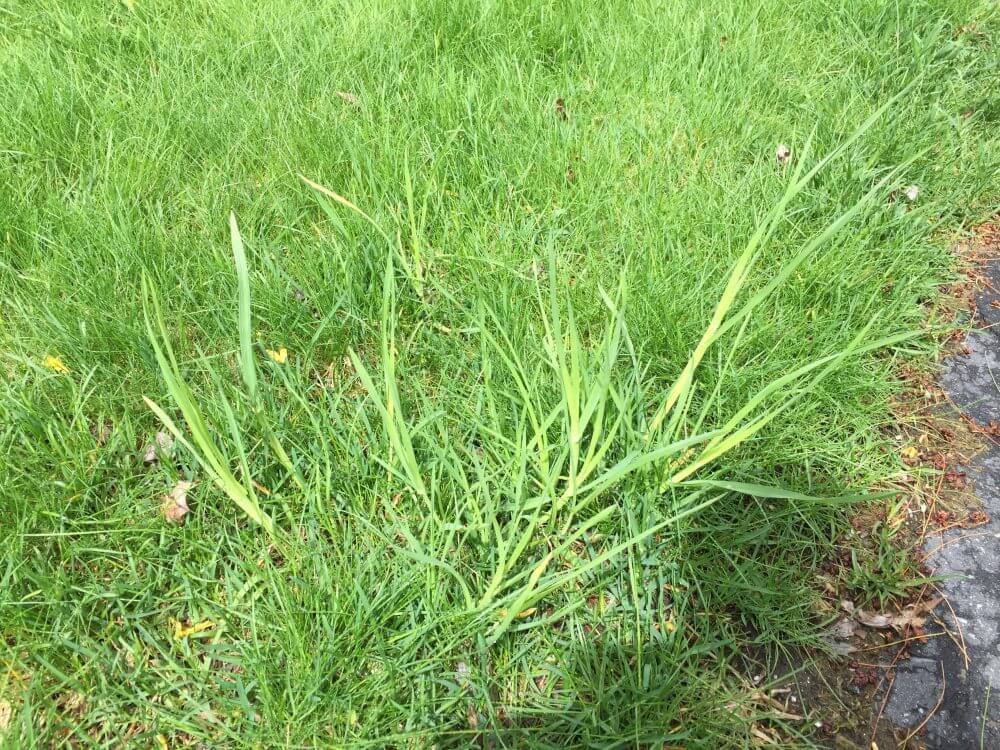I find there is some confusion between crabgrass and other annual grassy weeds versus perennial grassy weeds such as orchard grass and quack grass. This is especially the case in the spring when crabgrass, an annual, has not even germinated or is very small, yet everyone thinks they have crabgrass. This distinction is important as perennial grassy weeds cannot be controlled by normal control methods. Unwanted perennial grass varieties cannot be targeted while keeping other desirable turf. Crabgrass, on the other hand, can easily be prevented by a single treatment in the spring or at most a secondary spray in the summer for extremely infested lawns.
Orchard Grass
Orchard grass is an aggressive perennial grass and sticks out like the proverbial sore thumb, as seen in the picture above. Unlike crabgrass that would not even approach the mature size of orchard grass until August, many folks assume orchard grass is crabgrass or another annual weed. The perennial grass has a very flat and smooth sheath making it easy to identify.
Quack Grass
Quack grass is another aggressive perennial grassy weed common in lawns. Quack grass is a course-bladed grassy weed that spreads underground using rhizomes.
Bentgrass
Bentgrass is another common perennial grassy weed that is actually more subtle – not nearly as ugly as orchard grass. In a home lawn, bentgrass grows in patches and has a growth habit resembling broccoli. If bentgrass is pulled up and examined, the leaf blades emerge from the elevated point where mown compared to the base of the grass plant found in rye, bluegrass, and fescues. A brown stalk with leaves up top versus emerging from below gives bentgrass its broccoli-like appearance.
Bentgrass is generally not appreciated in a lawn because of its brown, elongated stalky appearance when mown at a typical 3” height. When bentgrass is cut shorter, it looks better but is the last to green up in the spring and the first to brown out in summer heat or stress. Therefore, bentgrass has a “sensitive” disposition and is inherently loaded with problems leading to lawns having patches of lime green in an otherwise darker green surface. Not exactly a loved grass type in the lawn world.
Perennial Grassy Weed Control
The good news with bentgrass is that it is the rare perennial grass that can be successfully thinned out selectively with a specific, high-end herbicide or totally killed in a onetime spray. Then loaming and seeding replaces the dead patches with a more desired grass. On the other hand, orchard grass and quack grass cannot be treated without harming surrounding turf. These must be dug up, pulled or totally killed with a non-selective herbicide followed with loam and seeding to re-establish this section of the lawn. Quack grass may need more than one spray since the roots are robust and extensive below ground.


